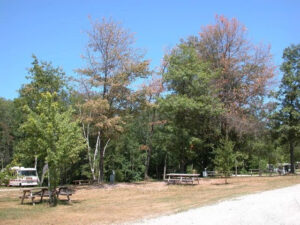For the first time, Ashland County is seeking oak wilt, a deadly disease that affects oak trees.
The DNR detected the disease in wood samples from a red oak tree in the town of Gordon.
“There is always the risk of oak wilt spreading into new and relatively uninfested areas in northern Wisconsin, such as Ashland County, so it’s always best to practice oak wilt prevention wherever possible to significantly reduce that risk,” says Paul Cigan, DNR forest health specialist in Hayward.
The most obvious symptoms of oak wilt emerge when the disease strikes in mid- to late summer. It leaves branches with wilted leaves and leaves on the ground at a time when you wouldn’t expect to see that.
“These are not the brown, dry leaves you see in autumn,” says Cigan. “These are partially green to bronze-green and are not completely dry. Once symptoms are visible, a tree loses most of its leaves and dies within a few weeks.”
Now that trees have mostly lost their leaves for the season, it’s difficult to detect oak wilt without a lab sample.
Oak wilt is common in the southern two-thirds of the state and is creeping north. Although oak wilt is in 66 of Wisconsin’s 72 counties, most of northern Wisconsin is still free of oak wilt, so it is important to prevent the spread of this disease.
Oak wilt easily spreads to new areas on firewood and other raw oak materials from infected oaks. Beetles that feed on the sap from tree wounds spread the disease from tree to tree. To prevent this:
- Avoid pruning or injuring oak trees from April through July.
- If you remove, prune or damage oaks between April and July, seal the wounds with a water-based (latex) paint or pruning sealer.
- Keep firewood local. Leave oak firewood and uncut firewood logs where they were cut for one year or until the bark is naturally loose.
Preventing the introduction of oak wilt to a new area is much easier than containing an infection. After a tree is infected, oak wilt spreads from one oak to another through connected roots between neighboring trees. Preventing this underground spread can be difficult and expensive.
The University of Wisconsin’s Plant Disease Diagnostic Clinic (608-262-2863) can help verify the presence of oak wilt.
See more information on oak wilt: https://dnr.wisconsin.gov/topic/foresthealth/oakwilt


